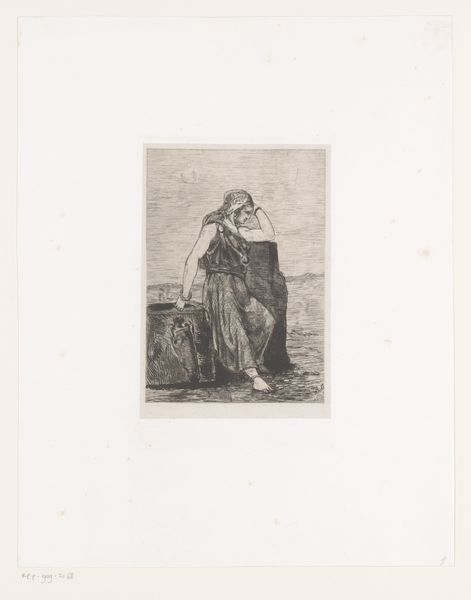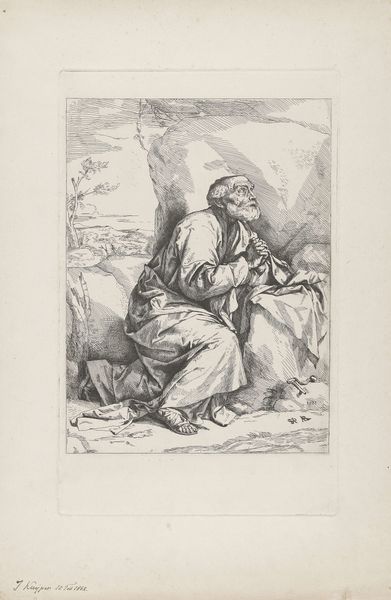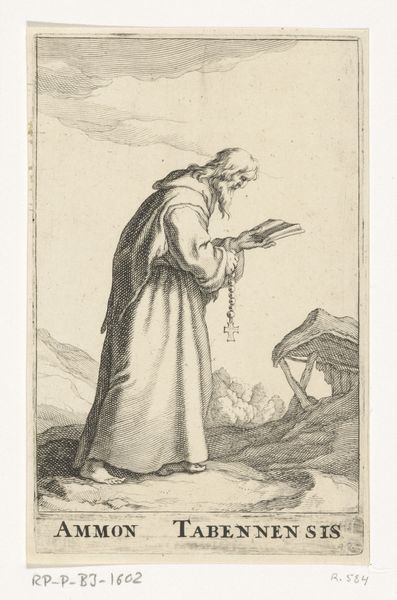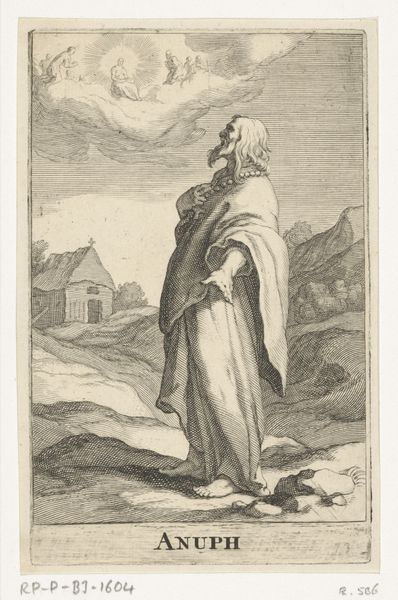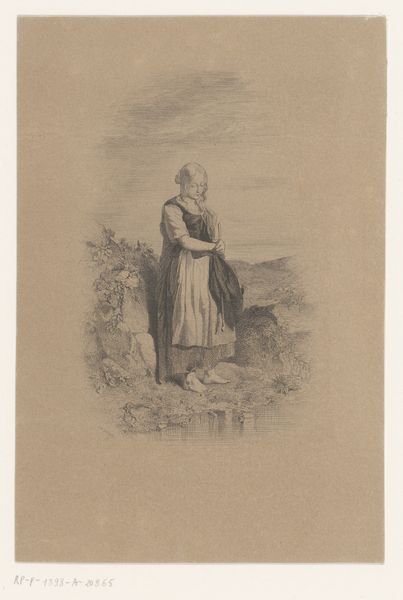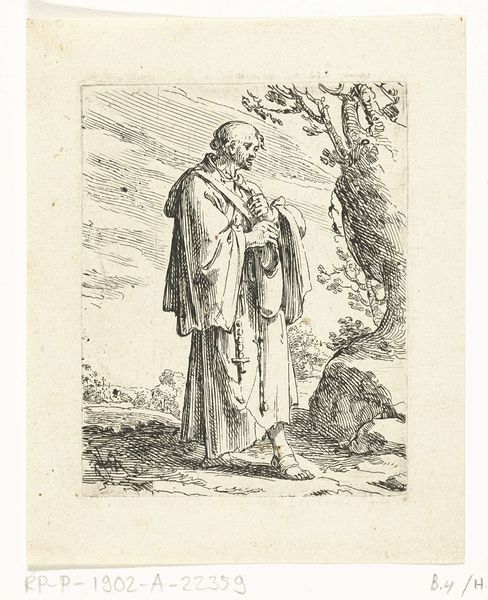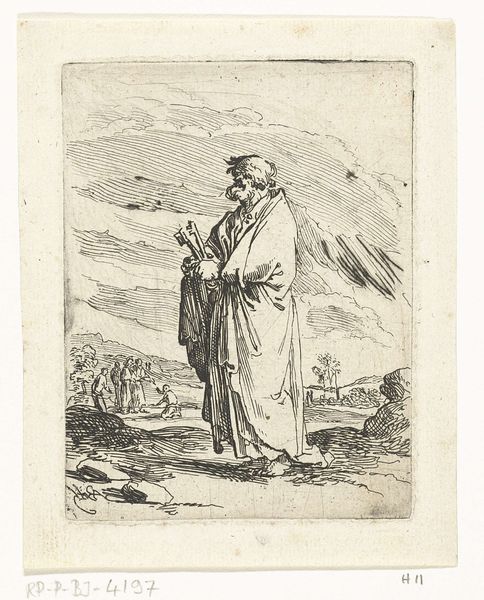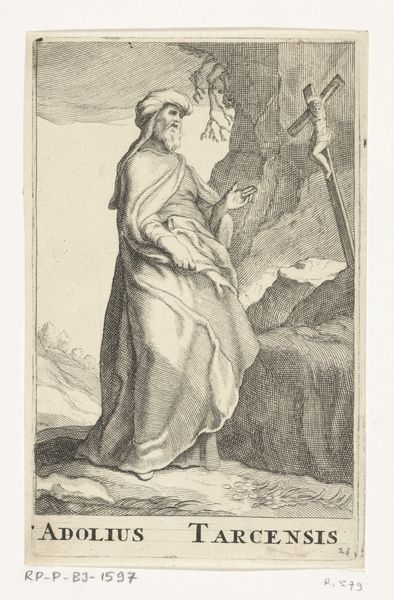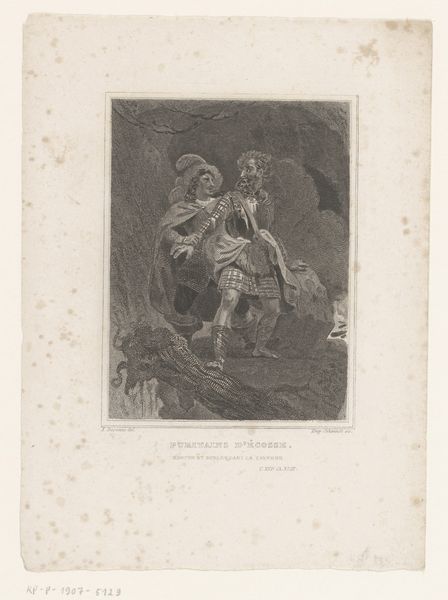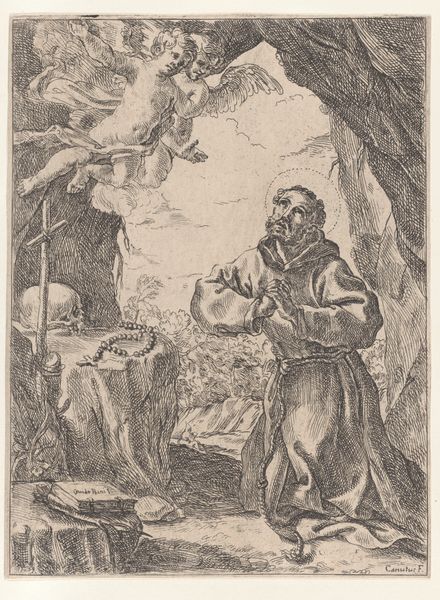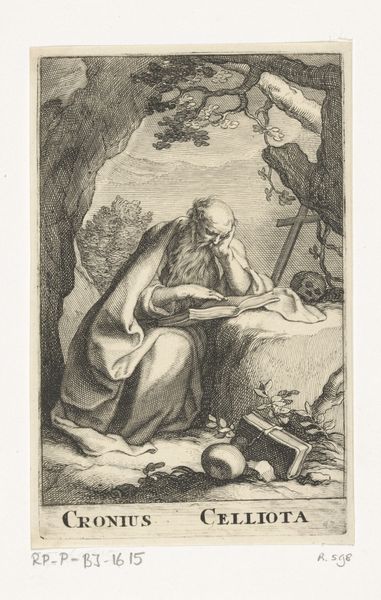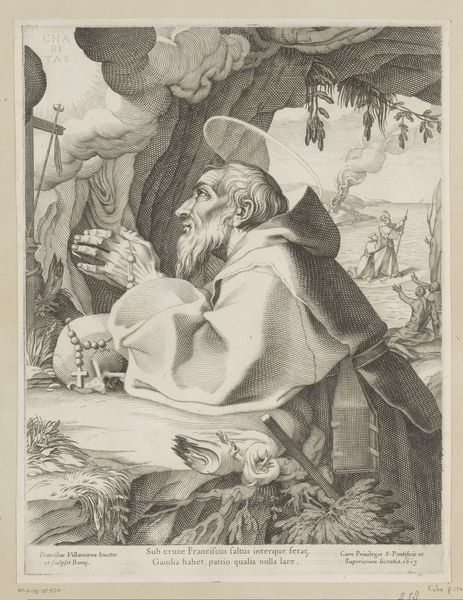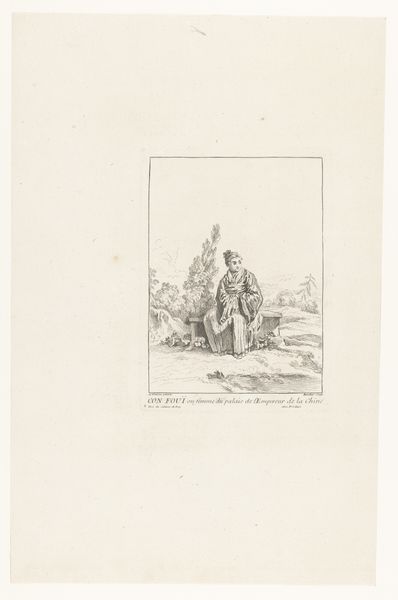
drawing, print, engraving
#
portrait
#
drawing
#
narrative-art
# print
#
old engraving style
#
landscape
#
romanticism
#
engraving
Dimensions: height 338 mm, width 247 mm
Copyright: Rijks Museum: Open Domain
Curator: Let’s consider this engraving entitled "Old Man at His Daughter's Grave" by Nicolas Toussaint Charlet, made between 1829 and 1839. What are your initial thoughts? Editor: Grief, stark and unyielding. The figure is completely isolated by sadness, and this is emphasized by the almost hyper-detailed lines, particularly in his beard and cloak. Curator: Indeed. Note how the engraving technique contributes to this intensity, specifically through its control of tonal value. Light etches the man’s form against the darkened backdrop, emphasizing the coarse textures that define the overall composition. Editor: Observe the man’s hunched posture; he carries bundled pipes and leans heavily on a stick. But there is also a dog in the composition which can be interpreted as a traditional symbol of fidelity, a last vestige of faithfulness accompanying the man to the grave site. Curator: Precisely. These emblems of loss carry further thematic relevance. The hat on the ground, for instance, and how it grounds the picture visually, while also offering us an idea of the type of person we can see mourning. It adds both specificity and emotional availability. Editor: The tombstone inscription itself – though partially obscured – is pivotal in dictating the narrative context and lending greater emotional nuance to this tender, solemn portrait. One reads “Ici Repose sa Fille” or "Here Rests his Daughter." The romantic focus on human fragility, visible in this engraving, renders death an explicitly heartbreaking concept. Curator: I agree, and that reading reflects our awareness of shifting cultural perspectives. What an analytical perspective can reveal is a structural harmony amid visible decay. I was taken by the artist’s effective rendering, for example, of linear and geometric forms, the lines becoming shorter in length in order to depict spatial recession as a means of adding a formal, artistic balance. Editor: And there you have it, where the aesthetic strategies harmonize so expressively, an ode to shared sorrow, personal and culturally shared across temporal distances.
Comments
No comments
Be the first to comment and join the conversation on the ultimate creative platform.
